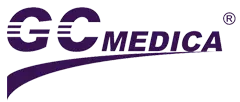-
Laparoscopic & Endoscopic Products
-
Laparoscopic Procedures
- Heated Insufflation Tube
- Laparoscopic Smoke Filter
- High FLow CO2 Laparoscopic Insufflation Filter Tube Set
- Veress Needle
- High Flow Heated Insufflation Tube
- Arthroscopy Irrigation Set
- Disposable Bladeless / Bladed Trocar with Thread / Balloon
- Disposable Wound Protector
- Disposable Height Changeable Wound Protector
- Retrieval Bag
- Laparoscopic Suction Irrigation Set
- Laparoscopic Insufflator
- Endoscopy Care and Accessories
-
Laparoscopic Procedures
- Respiratory & Anesthesia
- Cardiothoracic Surgery
- Gynaecology
-
Urology
- CathVantage™ Portable Hydrophilic Intermittent Catheter
-
Cysto/Bladder Irrigation Set
- M-easy Bladder Irrigation Set
- B-cylind Bladder Irrigation Set
- S-tur Bladder Irrigation Set
- S-uni Bladder Irrigation Set
- B-uro Bladder Irrigation Set
- Premi Bladder Irrigation Set
- J-pump Bladder Irrigation Set
- J-tur Bladder Irrigation Set
- H-pump Bladder Irrigation Set
- Sup-flow Bladder Irrigation Set
- Maple Irrigation Set
- Peony Irrigation Set
- Nelaton Catheter
- Urinary Drainage Bag
- Urinary Drainage Leg Bag
- Enema Kits
- Sitz Bath Kits
- Click Seal Specimen Container
- Silicone Male Catheter
- Spigot Catheter and Adaptor
- Sandalwood Irrigation Set
- Freesia Irrigation Set
- Daffodil Irrigation Set
- Single-Use Digital Flexible Ureteroscope
- Enteral Feeding Products
- Dental
- Fluid Management
- Warming Unit and Warming Blanket
-
Operating Room Necessities
- Nasal and Oral Sucker
- Disposable Medical Equipment Covers
- Magnetic Drape / Magnetic Instrument Mat
- Suction Handle
-
General Surgery
- Perfusion Atomizer System
- Gastric Sump Tube
- Surgical Hand Immobilizer / Lead Hand for Surgery
- Administration Set for Blood
- Ear/Ulcer Syringe
- Bulb Irrigation Syringe
- Toomey Irrigation Syringe
- Mixing Cannula
- Basin Liner/Basin Drape
- Medical Brush
- Sponge Stick
- Suture Retriever
- Needle Counter
- Disposable Calibration Tube
- Heparin Cap
- 100ML Bulb Irrigation Syringe
- Scleral Marker
- Surgical Light Handle
- Mucosal Atomization Device
- Durable Medical Equipment
- Patient Handling System
- PVC-FREE Medical Device
- Emergency
-
Patient Air Transfer Mattress Online WholesaleDec 17 , 2024
-
Cystoscopy Irrigation Set Online Wholesale | GCMEDICADec 17 , 2024
-
Patient Warming Device and Blanket Online wholesaleDec 16 , 2024
-
CathVantage™ Twist Intermittent Catheter | GCMEDICASep 20 , 2024
-
Single-Use Digital Flexible Ureteroscope | GCMEDICASep 20 , 2024
What Kind of Patients Need to Use a Nasal Feeding Tube?
1. Who needs to use a nasal feeding tube?
Nasal feeding tube refers to the method of inserting the nasal feeding tube into the stomach through the nasal cavity during nasal feeding, and injecting liquid food, water and medicine from the tube. Under normal circumstances, it is used for patients who cannot take food by mouth. By nasal feeding tube supply food and medicine to maintain the patient's nutrition and treatment needs.
The nasal feeding tube is mainly targeted at patients: (1) comatose patients; (2) patients with oral diseases or oral surgery, patients with dysphagia caused by upper gastrointestinal tumors; (3) patients who cannot open their mouths, such as patients with tetanus; (4) other patients, such as pemature babies, those who are critically ill or refuse to eat.
In summary, for patients who cannot eat, do not want to eat, and do not eat, we can use a nasal feeding tube to give nasal feeding to maintain the patient's nutrition and treatment needs.
2. So under what circumstances can you not use a nasal feeding tube?
In the process of nasal feeding, we need to slowly insert the nasal feeding tube into the stomach from the patient's nasal cavity through the esophagus. Therefore, the patient suffers from esophageal varices, esophageal obstruction and other diseases, and the nasal feeding method is contraindicated.
When the patient suffers from esophageal varices, we continue to insert the nasal feeding tube, which is easy to rupture the varicose veins; if there is an esophageal obstruction, reintubation is also easy to cause problems. In addition, patients with upper gastrointestinal bleeding, nasal cavity and esophagus surgery are also prohibited to use under normal circumstances.

